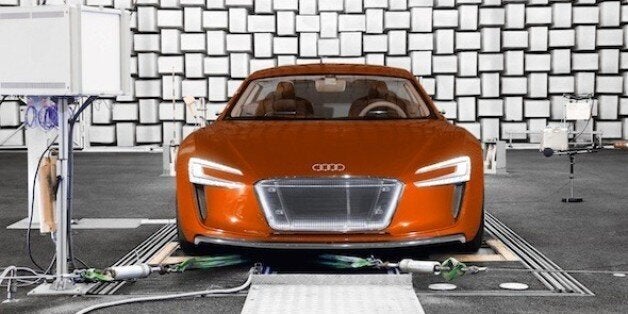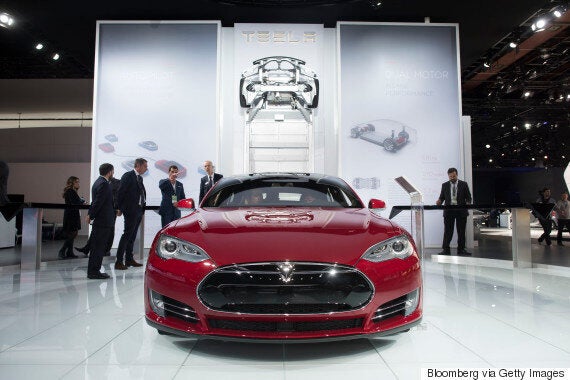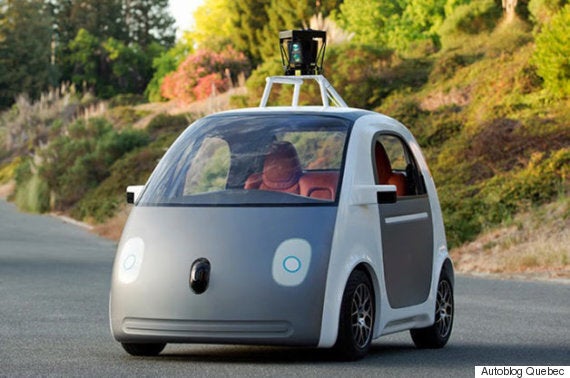
Conventional automotive technology has reached something of a zenith. For years manufacturers have been honing and refining petrol and diesel engines to make them cleaner and more efficient, but the basic engineering that underpins them has hardly moved on.
The last few years, however, saw a leap in vehicle tech, with carmakers racing each other to be the first to market with the developments that are going to shape the future of personal transport. From emissions-free motoring to cars that can drive themselves, here’s what we’ve got to look forward to:
Plug-in hybrids
If you’ve yet to be convinced by the cost savings and environmental benefits of conventional hybrids - and we don’t blame you – carmakers have developed the idea further, introducing plug-in variants that offer much greater emission-free electric driving range.
Drivers simply top up the battery – enough for a driving range to cover most people daily driving needs – then rely on the backup combustion motor to charge it and keep the wheels turning once that’s depleted. It’s emissions-free motoring without the worry of being marooned in the middle of know-where. And, with more and more manufacturers getting in on the act, including Audi with its A3 Sportback e-tron, you won’t have to sacrifice style or driving pleasure in the name of reducing your outlay.
Electric motoring: a new way of driving
While battery powered cars have been with us for some time, uptake has been relatively slow, with potential buyers put off by the notion of ‘range anxiety’ – that worry you’re not going to make it to your destination on the remaining charge, with the distance able to be covered fluctuating dramatically depending on issues as varied as driving style and ambient temperatures. And, once you have run out of juice, you’re in for an interminably long wait before you can get going again.

That was then. Huge advances in electric battery technology from the likes of Tesla and more have meant that a 300-mile range electric car is not only within reach, but on sale right now. Admittedly the Tesla Model S might be a bit out of most people's price range but Tesla's already working on a family car that'll offer the same range at half the price. Electric motoring is also changing the way we drive. For those who value peace and quiet on their morning commute, the monk-like distant hum from an electric motor will be positively meditative, especially if you’re more used to clattering diesel motors. You’ll find yourself working the pedals less, too, as regenerative braking means you can largely drive yourself around with just the one pedal, as electric cars slow quickly as you lift off the throttle. Obviously, we can’t recommend you do that, though…
Hydrogen fuel cells
As advanced as electric cars are becoming, they do not answer the problem of sustainable mobility, and merely move the problem of pollution further up the energy supply chain to power stations. Thankfully, carmakers have another trick up their sleeves in the form of hydrogen fuel cells.
By trick, what we really mean is technology that has taken many years of research and development by experts across the globe. Now, however, cars fuelled by hydrogen – the most abundant element on Earth – are a production reality.

Hydrogen cars can propel themselves with electricity generated by an on-board fuel cell, with pure hydrogen the only required addition. The sole emission from the process is water, meaning that driving a hydrogen vehicle truly is environmentally neutral – provided the hydrogen itself is sourced in a ‘green’ way.
However, while carmakers have readied the required technology, the implementation of hydrogen cars is being held back by a lack of necessary infrastructure – hydrogen filling stations are only currently seen in and around California – and the energy deficit of extracting pure hydrogen. However, bank on hydrogen vehicle being the future of motoring, as the world’s oil supplies dwindle ever lower and prices at the pumps become too prohibitive for private transport.
Autonomous vehicles
Watch any movie that had its own vision of the car of the future, and they almost always have one thing in common: the cars drive themselves. If you like the idea of kicking back and snoozing on the way to work, or being able to legally drive yourself home after a night at the pub, you’ll be glad to hear that the autonomous car is closer than you may think.

Google has helped kickstart the public profile of driverless cars while countries like the UK are already giving the green light to public road trials of autonomous vehicles, This combined with commitments from the likes of Audi and Volvo mean that we are now in the exciting position where being driven about without the need for a chauffeur is just a few short years away.
Of course, keen drivers are less enthusiastic about handing over the controls to a computer, but carmakers are equally keen to show that autonomous driving tech can be used to enhance performance as well as safety. Audi has already successfully sent its RS7 coupe around Germany’s Hockenheimring at full race pace, and scientists at Stanford University have created an Audi TT coupe that actually managed to outpace a professional racing driver on track.
If you’re reading this Lewis Hamilton, don’t worry, it’ll be a while before we see Johnny Five giving you a run for your money, though inevitably, your days are numbered.